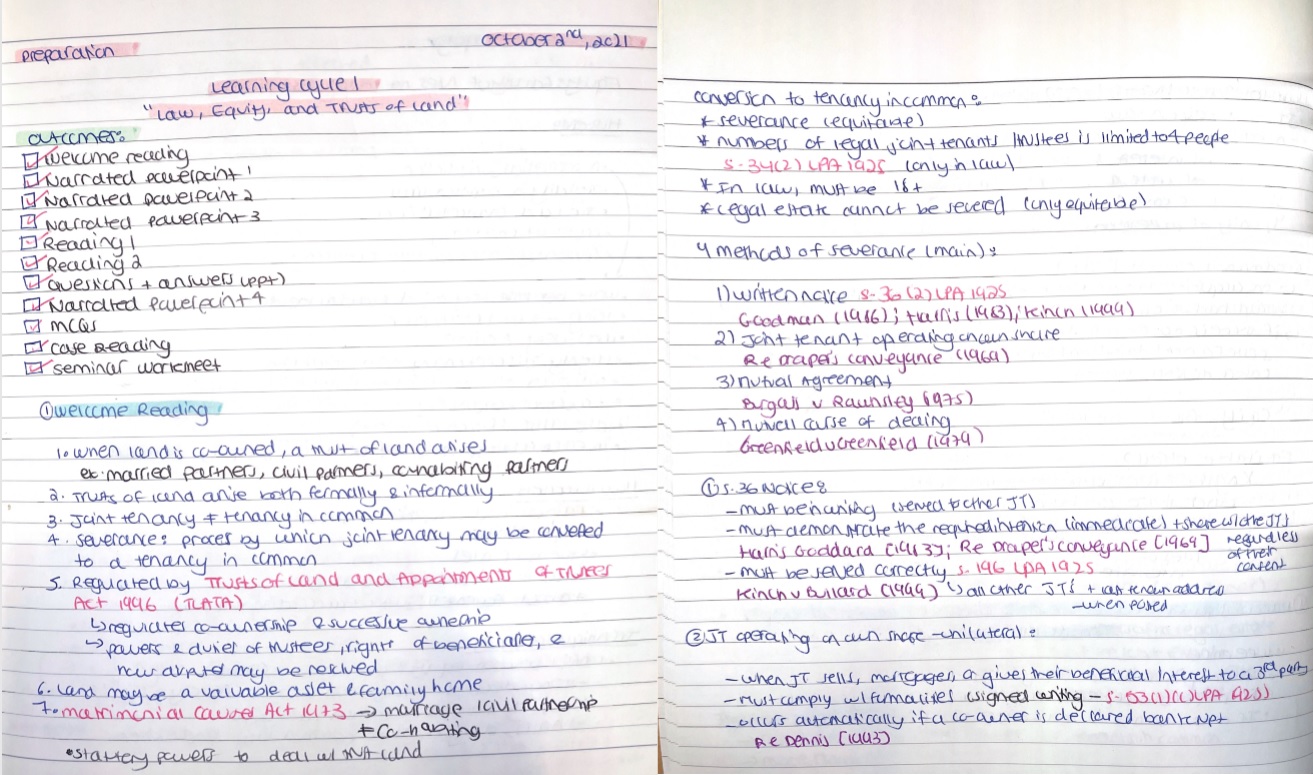 by Tala Youhana, Law student and Bristol Futures Advocate
by Tala Youhana, Law student and Bristol Futures Advocate
If you’re a law student, you’re probably familiar with the ‘IRAC’ method, which is traditionally used to solve legal problem questions, so you’re probably wondering why I’m mentioning it in a post about making revision notes. Surprisingly, IRAC (Issue, Rule, Application, Conclusion) can provide a very effective guide beyond the remits we’re familiar with, and this post will seek to walk you through the process of using IRAC to make your revision notes.
Firstly, it’s important to emphasize the individualised nature of making notes, whereby there is no single right or wrong approach, so this post should only be used as a guide to help you find a unique approach which works well for you.
I- Identify the issues
This is where you ask yourself what has worked well for you in the past and what hasn’t. In this stage, keeping an open mind is essential, and can be your most powerful tool. For instance, do you have a preference between digital and hand-written notes? If so, have you tested out both before coming to your conclusion? You may ask yourself questions like, which is easier to refer to when writing essays, which is easier to store, how easy is it to find what you’re looking for, would a hybrid approach be more effective, etc. Seek to identify obstacles you experienced in previous revision sessions and intervene with an effective solution. For me, I used to have difficulty with revisiting incomplete work, so I created a checklist before each lesson in my notes detailing all the work that I need to get done, so that when I was revising, I could immediately find incomplete work which needed revisiting.
R- Make the rules
Law students are expected to navigate numerous types of sources including cases, statutes, lectures, textbooks and articles, so finding a consistent technique that simplifies this is important. For instance, I generally colour code my notes following the same rules in every module: making case names purple, statutes pink, and articles emboldened, to distinguish them. For digital notes, also aim to familiarise yourself with keyboard functions such as “ctrl + f” to help you locate keywords when browsing a long document. Furthermore, incorporating a system of subheadings can be really effective for revision.

A- Apply the rules
Once you have found the technique which works for you, your next hurdle would be to stay consistent in applying it, as this will remove the burden of you having to remember each modification you made over time, unless you feel that your previous approach is no longer working for you.
C- Conclude
Finally, if you have spare time, formulate summaries for each section of your work or leave some room for this, to make it easier for your future self to remember the key elements in each section.
This was a whistle-stop tour to making revision notes for law, and now the rest is over to you to find what works best for you. Good luck!
